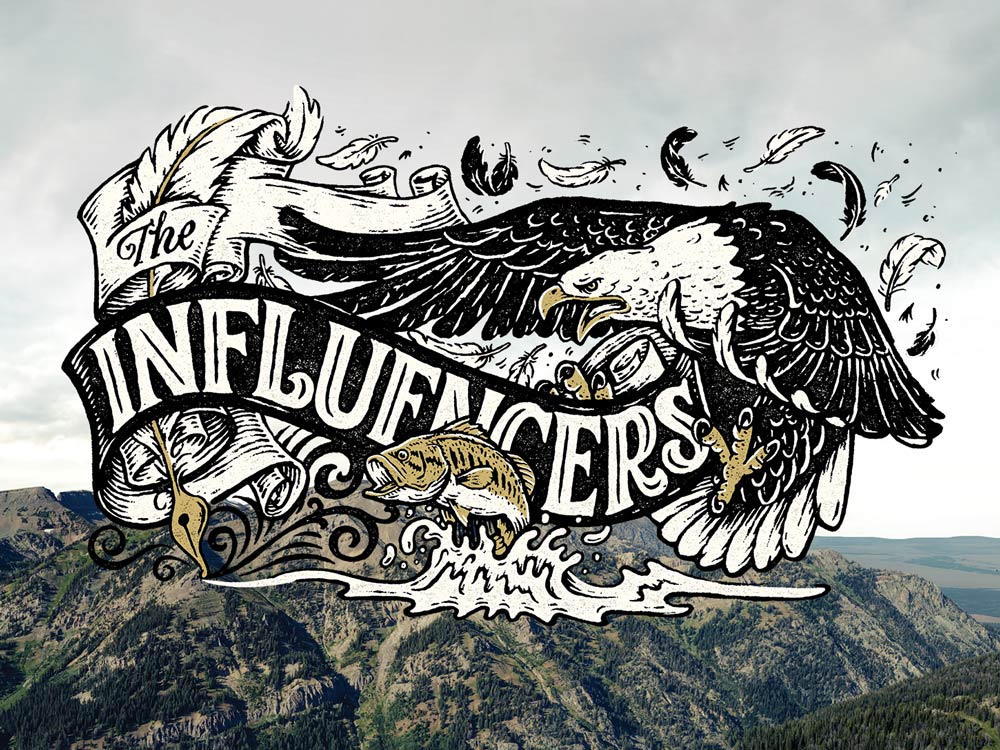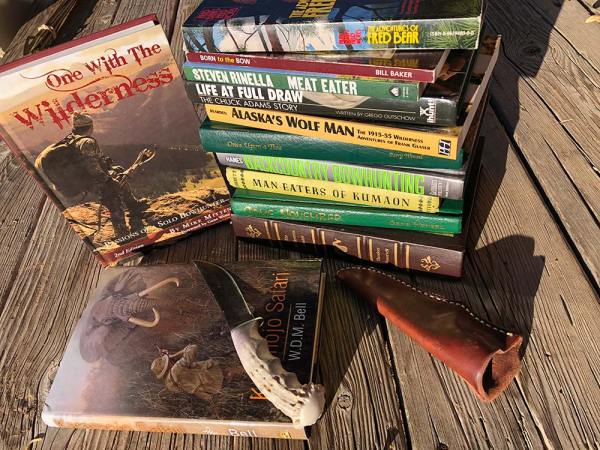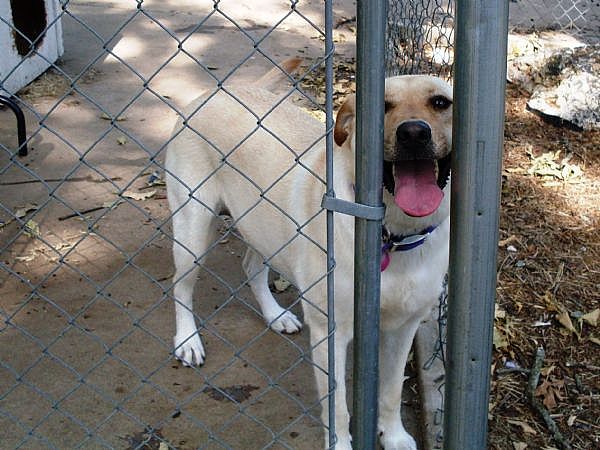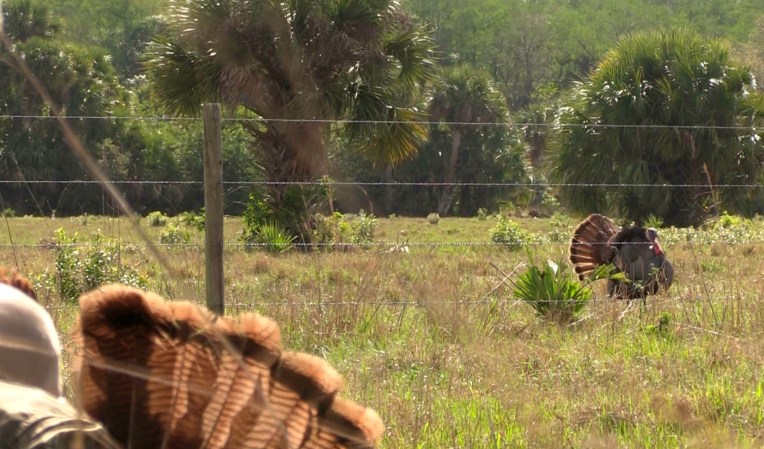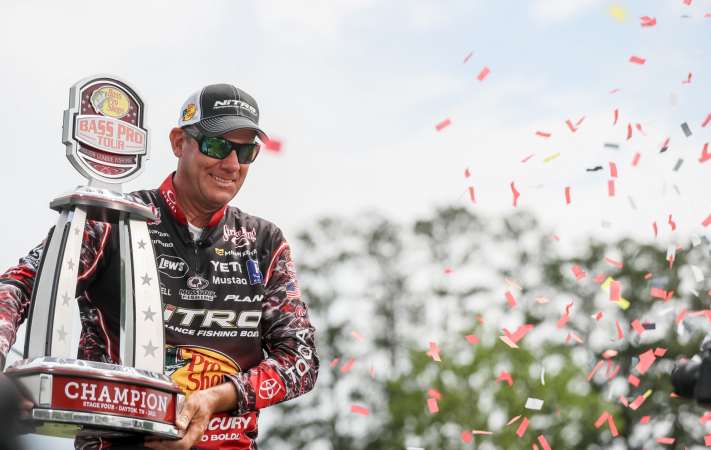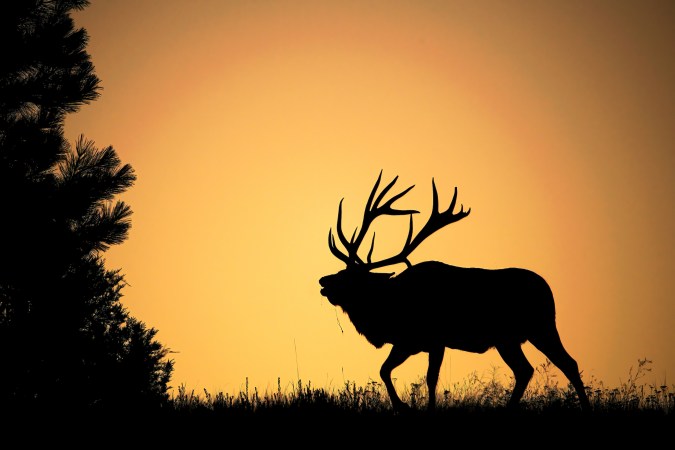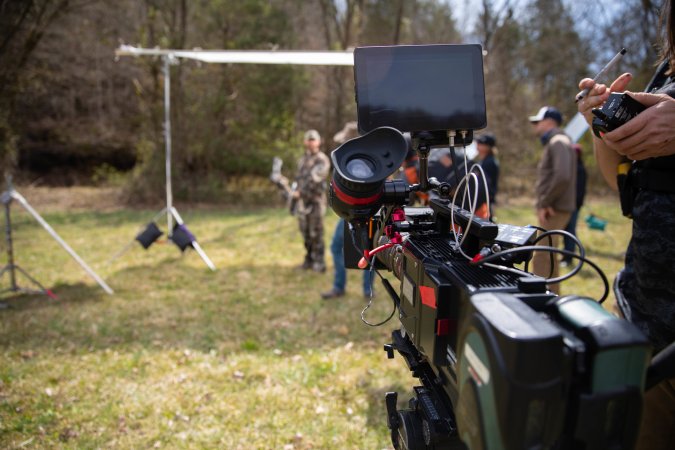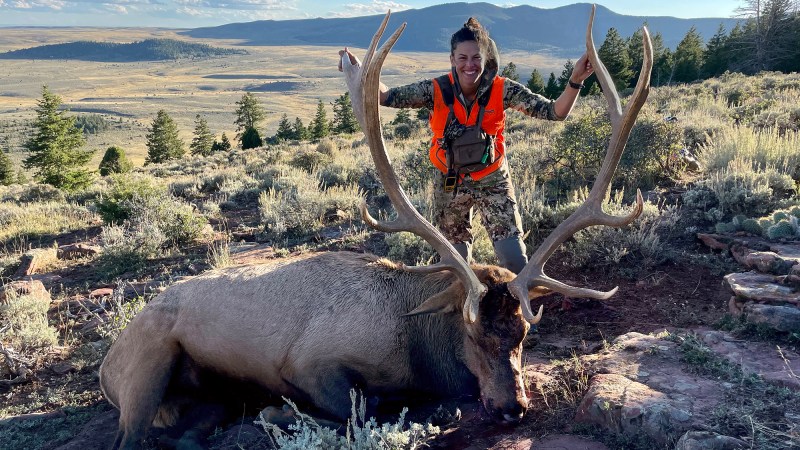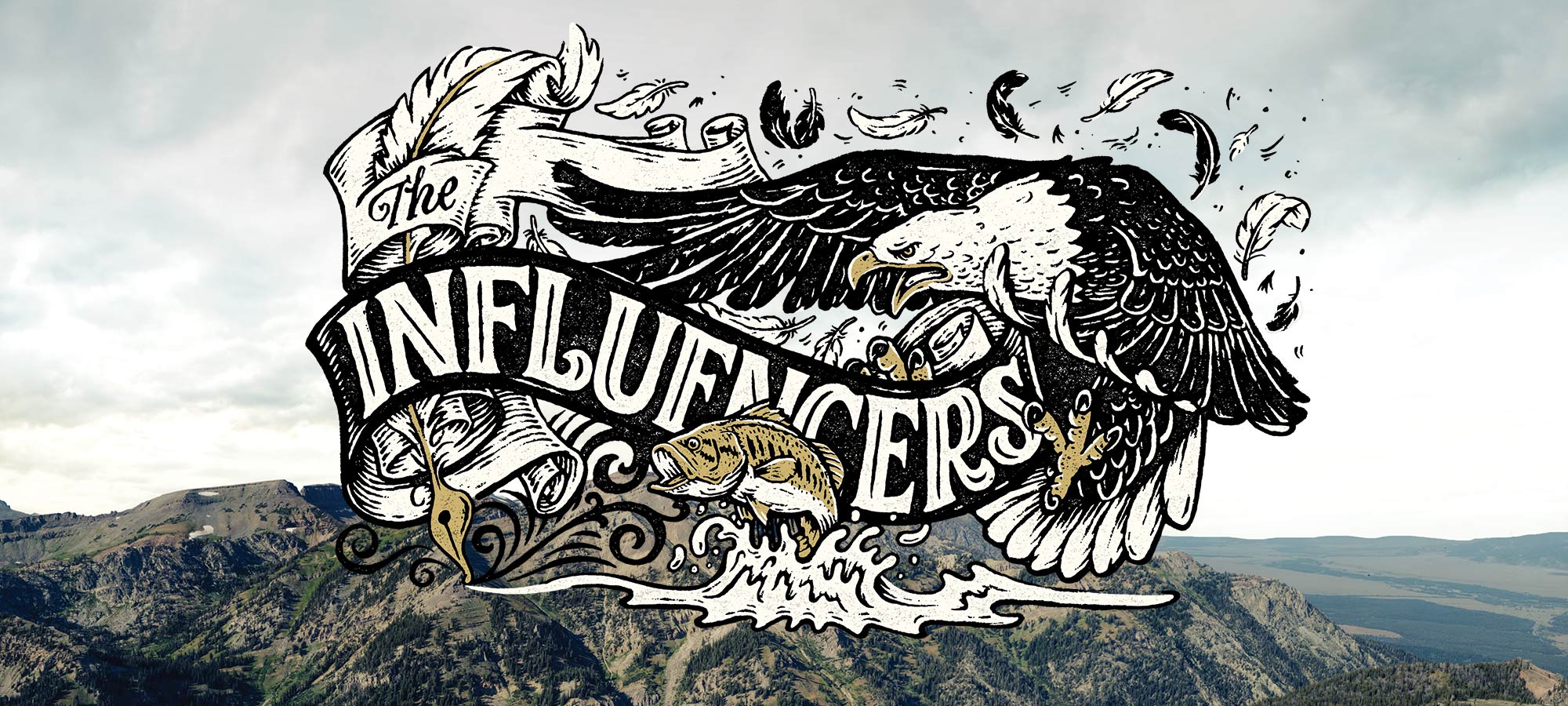
Everyone has a lesson to learn, but also to teach—and some are better than others at making curriculum stick. That’s the idea behind this roster of “teachers,” who are shaping how we think about our world. Their subjects are wide-ranging, and include the tackle we fish, the ammo we shoot, and how and where we hunt.There are also a few bigger takeaways beyond these visible (and fleeting) trends of style and consumption. One is that the mechanism of influence has changed as our means of communication have evolved. Modern influencers are capably leveraging the audience-amplification capabilities of social media, which creates both a community and a soapbox for many of the folks profiled here.This is not a comprehensive list, since it would be impossible to enumerate each influencer in our diverse field. We expect there are many whose efforts (positive or negative) have gone unnoticed by our community. Indeed, some folks deliberately keep a low profile, making their inclusion here difficult (including several natural-resource lobbyists we tried to interview).Lastly, it’s useful to remember that influencers introduce bias. They always have, and they always will. But it’s up to you to choose who to be influenced by.Below is our list of influencers in (with the exception of Jim Shockey) no particular order.
1. Jim Shockey
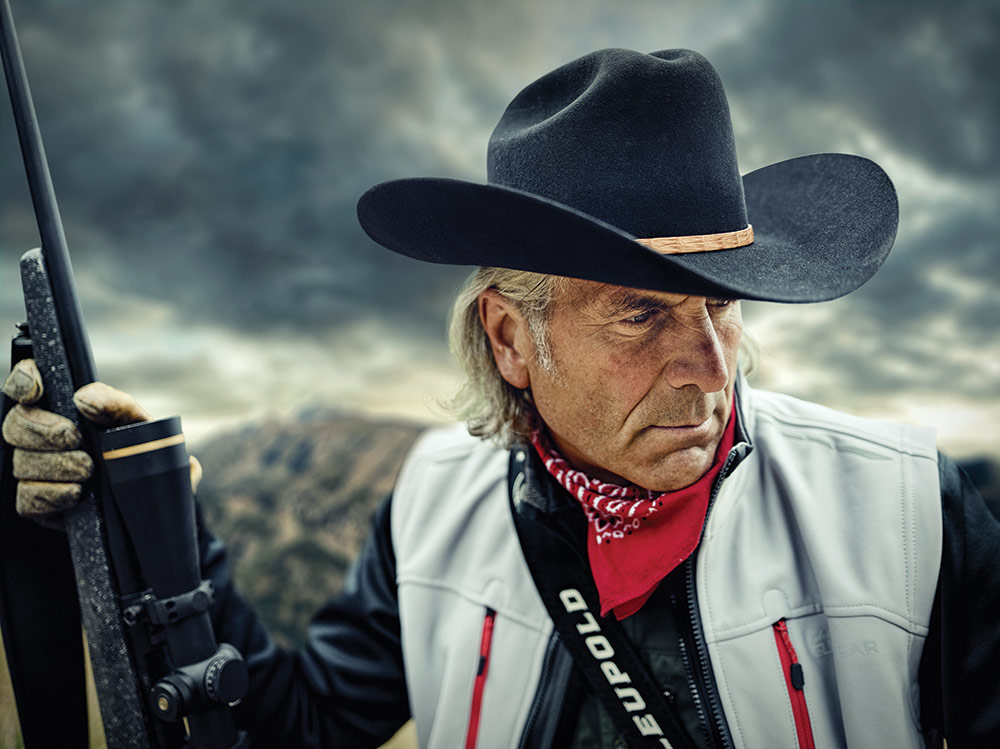
Jim Shockey’s influence on the world of hunting has been two-fold. First, and most important, he’s made adventure hunting in far-off places for exotic species palatable (and at times even inspirational) to average outdoorsmen and women. Second, he’s been a prodigious promotor of brands and products. Keep Reading »
2. Fred Zink, the Inspired Faker
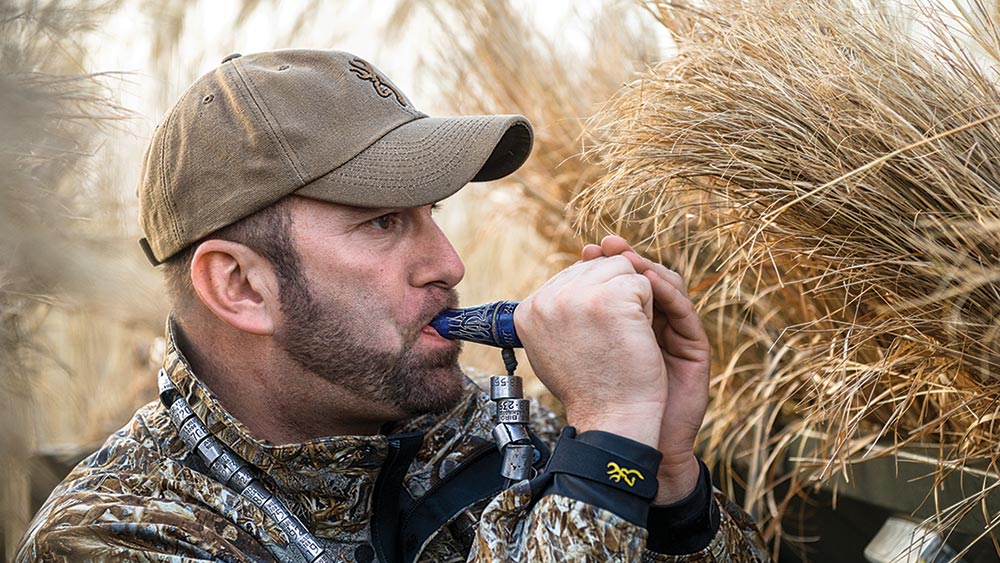
Nine-year-old Fred Zink hunted blackbirds over a decoy spread of 300 silhouettes he’d made of Styrofoam and cardboard. He hunted from homemade blinds with a pellet gun because his dad wouldn’t let him use a shotgun on blackbirds. Fred Sr., an amateur wildlife artist, ran a construction company that provided Fred Jr. with “endless miles of lumber, supplies, and lathes,” the younger Zink says. “I grew up in an artist atmosphere—with a lot of tools.”
Throughout the next four decades, and while winning numerous world championships in duck and goose calling competitions, Zink built a résumé of innovations and developments that, if they didn’t necessarily revolutionize waterfowl hunting, certainly improved it.
Zink worked with Final Approach founder Ron Latschaw to design the Eliminator layout-style blinds. With his wife, Dawn, he founded Zink Outdoors, a mail-order company that sells calls, decoys, and accessories. Next came Zink Calls, featuring “calls the average individual can pick up and blow fairly quickly and fairly successfully.” The key, Zink says, “is just common air pressure. We design calls so it doesn’t take a lot of air to produce a lot of volume.”
Zink then went to work for Avery Outdoors, where he designed ground blinds, camouflage patterns, decoy bags, and other accessories. Zink also designed Greenhead Gear decoys, for which he hired champion carvers to create “next-level decoys.” He spent several months in Asia working with manufacturers, “trying to perfect how to make good-quality decoys at a reasonable price,” he says.
Next Zink founded Avian-X, using all he’d learned to produce detailed turkey and waterfowl decoys. “I’ve always concentrated on things that could make or break the hunt.”
Zink’s influence on hunting products coincides with increasingly knowledgeable hunters and increasing demand for more realistic and effective decoys and gear. Hunters have become more savvy, thanks to constantly improving channels of information distribution: first magazines, then television, and DVDs, and now social media, he says. Anyone can go online and find information and videos from which to learn, Zink points out.“It’s hugely important to teach people how to be successful.” —Joe Arterburn
3. Doyle Moss, the Trophy Hunter
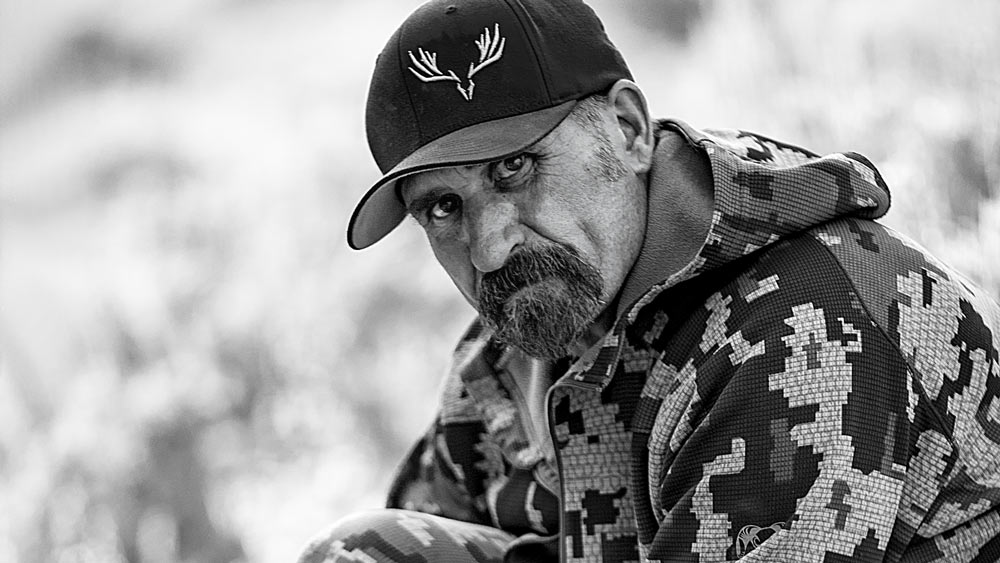
Roughly half the people who know about Doyle Moss want to stop him. The other half? They want to be him.
Moss is possibly the most high-profile hunting guide in the West. He guided Denny Austad, who killed the world-record elk, Utah’s “Spider Bull,” in 2008. He guided Sue Ann Kinney to a 441-inch Nevada bull, the largest elk ever killed in that state. Moss, founder and owner of MossBack Outfitting and Production Company in Utah, is the guy who’s just over the shoulder of the high-net-worthers posing with animals killed on governor’s tags or high-dollar auction tags. And he’s an unapologetic trophy hunter.
“You get the taste for killing giant animals…. These are smarter, wiser animals that have eluded everybody else. Killing them definitely is a motivation for me. It gets in your blood,” Moss says.
Moss, who was raised on the same rural Utah mountain where the Spider Bull was killed, has grown his business from a sideline that allowed him to spend more of his year hunting to become one of the most influential big-game outfits in the country. He has been a vigorous proponent of trophy-tag set-asides, in which state game agencies auction off a couple of hunting licenses for trophy-rich hunting districts and use the auction revenue for habitat work.
“Doyle has filled a niche of guiding hunters who have bought premium auction tags,” says Miles Moretti, CEO of the Mule Deer Foundation, which sponsors the Western Hunting & Conservation Expo, where revenue from auction tags has increased every year, to reach $6 million in 2017. “Many of the highest-bidding hunters are willing to pay because they are giving back to conservation.”
Critics of tag set-asides argue that, as a public resource, access to wildlife should be democratic and not distributed by a high-bidder model. But Moss thinks the auction tags are the way of the future.
“We have proven that the biggest trophies are worth more money than most hunters are willing to pay,” he says. “And we are replicating our model from Utah, Arizona, and Nevada in other states.” —Andrew McKean
4. Donald Trump Jr., the First Son
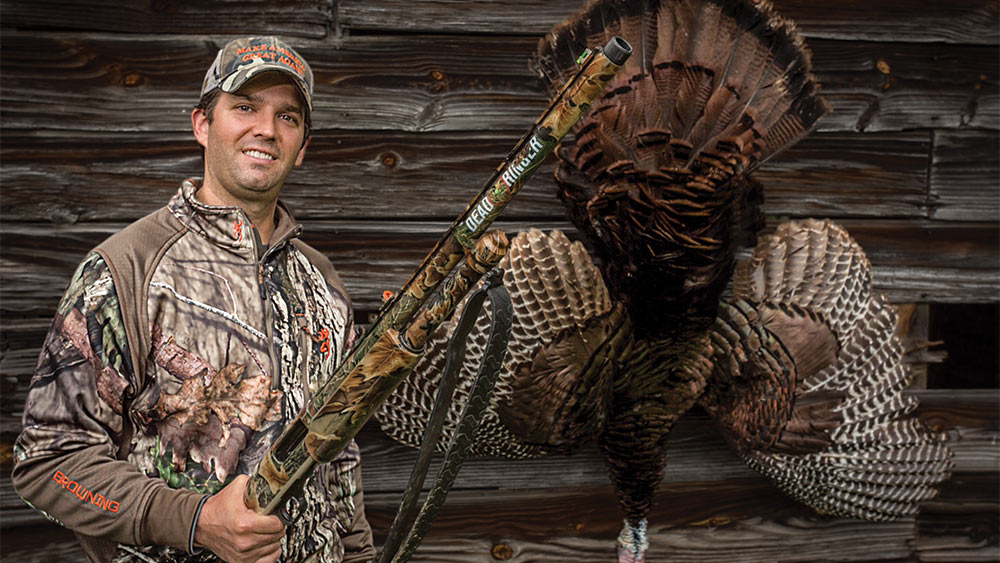
The name Miloš Zelníček will never appear on anyone’s list of influential outdoorsmen, yet it could be argued that it should head the roster, albeit in a six-degrees-of-separation way.
As a child, Don Trump Jr. spent several weeks each summer in what was then Czechoslovakia with his late grandfather, Miloš, where they would hunt and fish.
“He started the passion for the outdoors in me from the age of five,” says Trump Jr. “I remember him pointing to the trees and saying to me, ‘There’s the woods. I’ll see you at dark.’ He taught me woodsmanship.”
Zelníček instilled a devotion to the outdoors in Trump Jr. that remains deep-seated today. It’s a devotion that some—including Trump Jr. himself—say swung his father’s presidential campaign, helped shape the Trump administration’s stand on outdoors and gun-ownership issues, and resulted in the cabinet appointment of Secretary of Interior Ryan Zinke.
“I’ve hunted and fished with Secretary Zinke,” says Trump Jr. “And he’s doing a great job in a commonsense fashion. But what the 2016 election proved was that hunters, anglers, and shooters are a key voting bloc that can’t be ignored. It’s not just about the last election, though. It’s proved to future politicians that we will show up and vote. It’s about the future of the outdoors and shooting. Sportsmen have to make their voices heard.”
Because of ethics laws, Trump Jr. has had to step back from his pre–Election Day pledge to “be a very loud voice in his father’s ear about outdoor issues,” it’s clear that his intention is to continue to be an outspoken proponent of hunting, fishing, and gun ownership.
“We need to preserve the tradition for our kids,” says Trump Jr. “I’ve had to separate myself from the administration, but I have tried to support hunters, fishermen, and shooters. I put myself out there during the campaign and will continue to do so. We need mentors—I’ve had several influencers along the way, and know that to buy a gun or to shoot a deer can be intimidating. But we’re doing some incredible work and will continue to.” —Gerry Bethge
5. Kevin Goddard, the Wildlife Sleuth
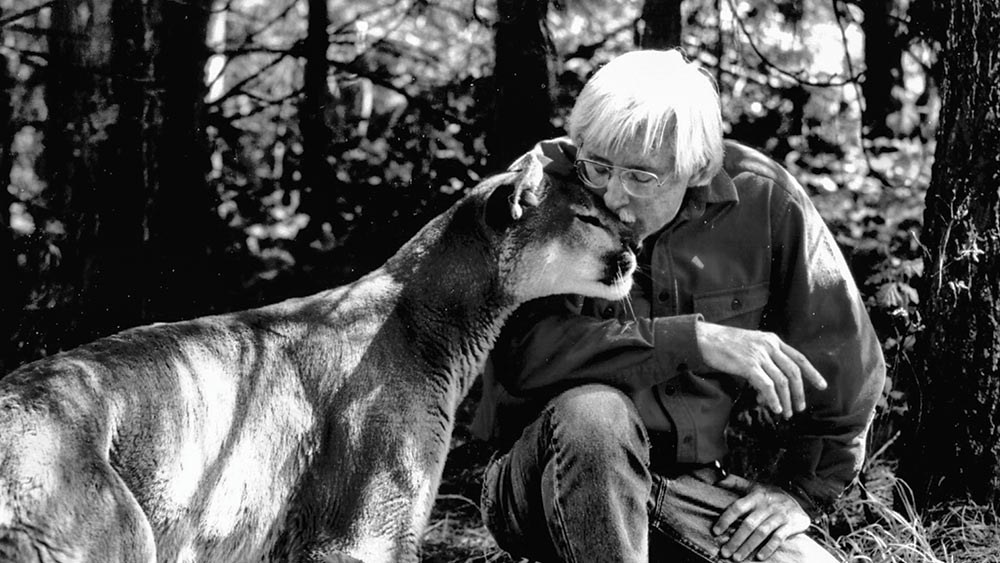
Ken Goddard began his career in wildlife forensics quite literally by accident. In 1968, Goddard, then a biochemistry student at the University of California, Riverside, injured himself during judo practice. En route to the hospital, his judo instructor—a San Bernardino law enforcement officer—encouraged Goddard to consider a career in the developing field of crime scene investigation. That prompted Goddard to become a CSI, and in 1979, he traveled to Washington, D.C., to lobby for the world’s first animal forensics center. Eight years later, construction on the National Fish & Wildlife Forensics Laboratory began in Ashland, Ore., and Goddard has served as lab director ever since. Until the center opened in Oregon, the tactics and methods for policing wildlife crimes were similar to those for processing human crimes, and therefore limited in their applications to wildlife. Finding the experts to assess each individual scene was a pain. Investigators would have to find, say, a DNA expert and an ornithologist, none of whom were under the same roof or familiar with wildlife crimes. The lab’s biggest contribution is arguably streamlining wildlife crime scene analysis. It employs, among others, a veterinary pathologist, a geneticist, an ornithologist, and a collections manager to aid in the investigation of wildlife crimes, an estimated $17 billion market worldwide every year. Additionally, the facility is the official crime lab of the 182 member nations of the Convention for the International Trade of Endangered Species. —Brad Fitzpatrick
6. Dr. Walter Palmer, the Scapegoat
Unless you’re an animal-rights activist, the name Walter Palmer probably doesn’t ring a bell. The name Cecil the Lion, on the other hand, probably sounds like a foghorn. In July 2015, Palmer, a dentist from Minnesota, hunted and killed a lion in Zimbabwe for a trophy fee of about $50,000. Erroneous reporting—that Palmer and his professional hunting guide illegally lured the GPS-collared lion out of Hwange National Park—sparked a brutal social media backlash that continues to shape trophy-hunting regulations and perceptions. Although Palmer ultimately suffered no known legal consequences for the hunt, the fallout resulted in vilification that ranged from vandalism of his dentistry practice to PETA calling for him to be extradited and hanged. Meanwhile, hunting of lions, leopards, and elephants, along with all bowhunting, was temporarily suspended in Zimbabwe. More than 40 airlines banned the transport of hunting trophies, France and Australia outlawed the import of lion trophies, and the USFWS listed two subspecies of lions under the Endangered Species Act. The takeaway? Hunting and conservation are more susceptible to the whims of public opinion and misinformation than we realize. —Natalie Krebs
7. Trevor Farnes, the Supplement King
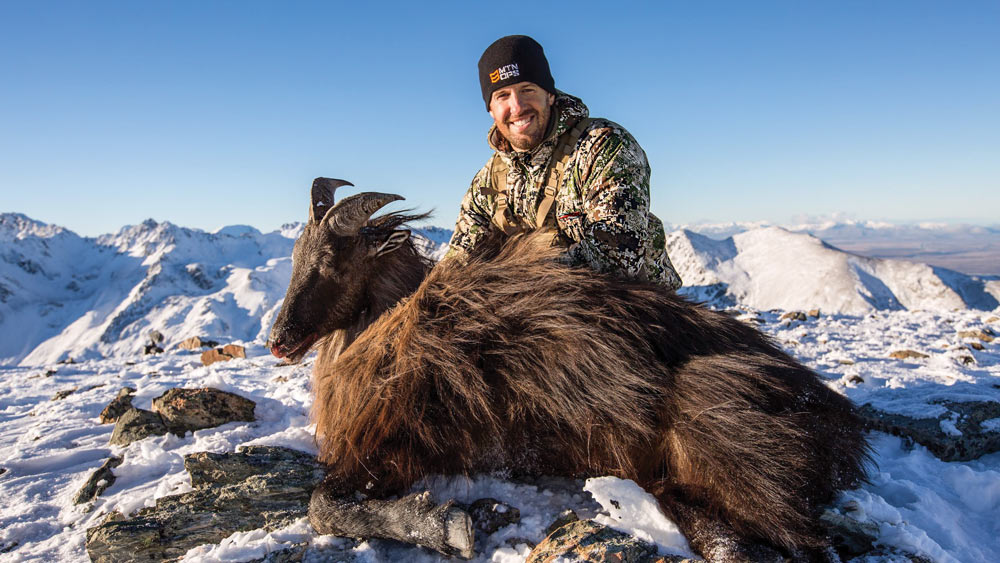
Trevor Farnes always thought it curious that hunters tend to spend money on gear and destination hunts, but often neglect the most critical ingredient of success on any outing: their own body. So he decided to marry his family’s background in health care and business with his own interest in backcountry hunting by developing a line of nutritional supplements aimed at outdoor adventurers.
In collaboration with two partners, he founded MTN OPS—the first line of supplements designed specifically for hunters and purported to enhance performance.
The company has tapped into to the rise of the so-called hunter-athlete, capitalizing on a trend of hunters who are rejecting the Bubba stereotype and turning a pastoral pastime into an extreme pursuit. —B.F.
8. Gary Yamamoto, the Accidental Innovator
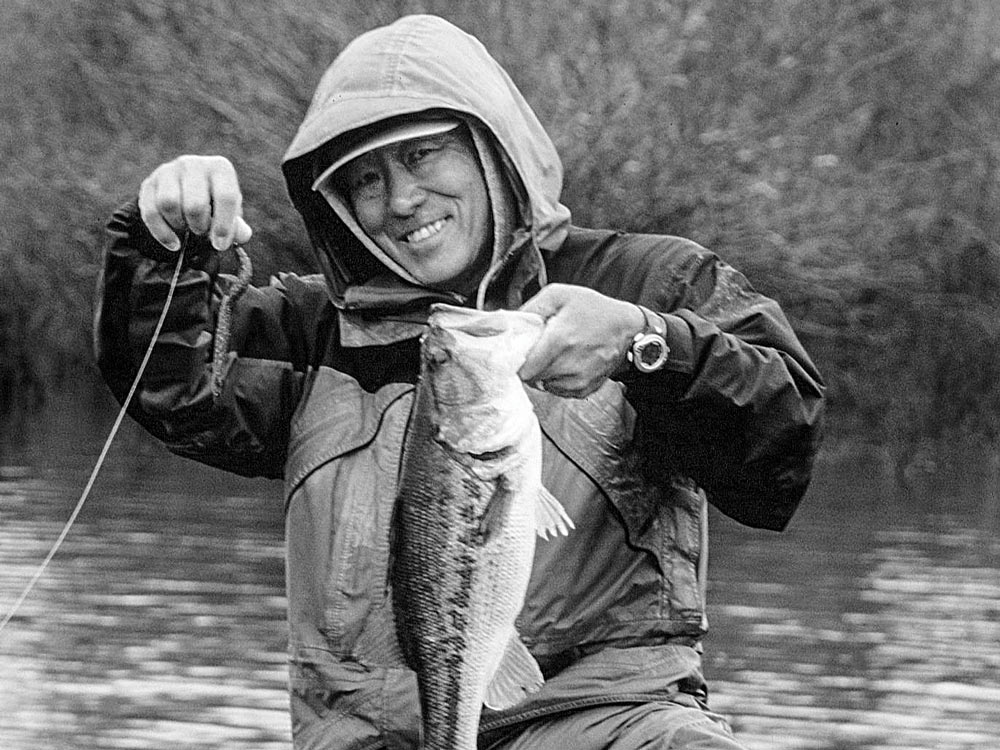
The most revolutionary soft-plastic bait in the history of bass fishing was developed almost by mistake. Gary Yamamoto was simply trying to improve an existing soft jerkbait when he designed the Senko to mimic the shape of a Bic pen. His goal was to create a bait you could quickly twitch for a reaction or feeding bite. But what he ended up with changed the face, and the catch rates, of bass fishing.
“I originally wanted to make the bait like a Slug-Go,” Yamamoto admits, “but after the initial phase of testing, it turned out that the Senko was better as a finesse bait. When I saw it sink in the water, I knew it was special.”
So special, in fact, that the shape has been duplicated by no fewer than 54 other manufacturers. It’s the top-selling soft-plastic bait on the planet. Gary Yamamoto Bait Co., founded in 1983, ships 2.5 million Senkos per year worldwide.
Yamamoto has influenced more than lure choice. He flew a bass boat to Japan to bring anglers in that country a bit of bass culture. Japan is now the No. 2 bass boat market in the world. —G.B.
9. Land Tawney, the Public-Land Crusader
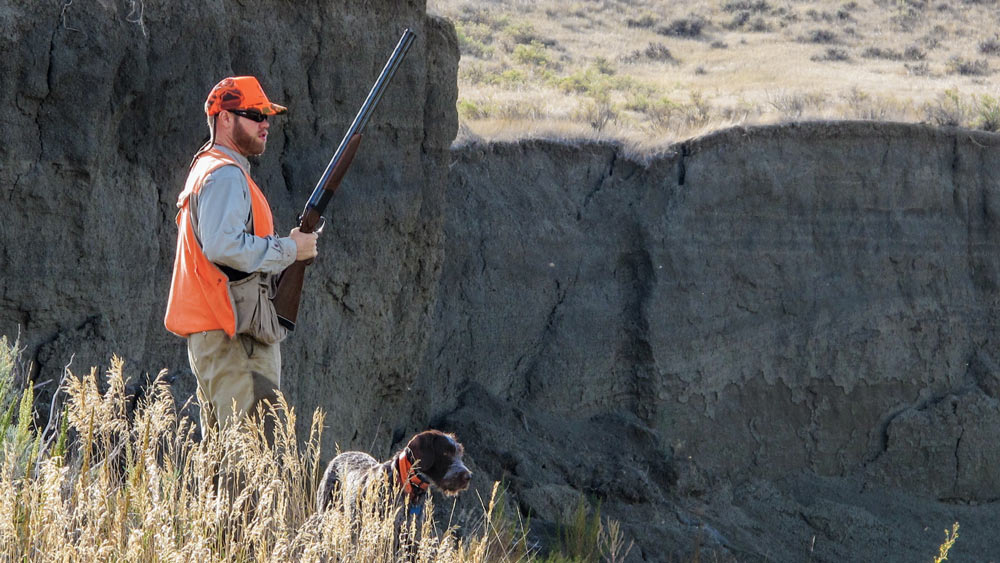
Land Tawney is a quote machine. When a public-land access issue crops up, you’ll find Tawney, the executive director of Backcountry Hunters and Anglers (BHA), commenting on every media outlet from Forbes to Facebook. Here is a recent gem:
“You’ve kicked the hornet’s nest and the army is amassing…. The only thing you can do is pull those bills back,” Tawney said via Facebook Live earlier this year, after Utah Rep. Jason Chaffetz introduced a bill to sell 3 million acres of public land.
Less than a week later, Chaffetz rescinded the bill, which Tawney counts as BHA’s biggest victory. But Tawney isn’t just talk. His organization, which lobbies for access and conservation on public lands and waters, has doubled its membership each year for the four years that Tawney has been at the helm.
At a time when the political climate is deeply partisan, the BHA membership is notably diverse. About 60 percent of the members lean conservative and 40 percent lean liberal, Tawney says. At 42 years old, Tawney is the second-oldest person on staff. BHA has been able to attract a variety of outdoor enthusiasts, from hardcore Western elk hunters to hikers and mountain bikers. By nature, most folks who enjoy the backcountry are not joiners—after all, many head into the wilderness chasing not only game but also solitude. Yet the group is united by a shared ethos, Tawney says.
“It’s about the grit that you feel when you’re in the challenge and toil of hunting and fishing in the backcountry on public land,” Tawney says. “People who rock climb, backcountry ski, and mountain bike all know what that means. We try to speak about it in terms that unite us.”
BHA’s rise has not come without criticism. The Green Decoys website argues that BHA, among other organizations (like Trout Unlimited), is actually an extreme environmentalist group that uses hunting and fishing imagery as a facade to push its agenda. Interestingly, that site has ties to Richard Berman, a big-time oil and gas lobbyist.
“When did being a conservationist mean that you’re a far-left liberal?” Tawney says. “Why is standing up for the resource a bad thing?” —Alex Robinson
10. Frank Galli, the Long-Range Rifle Guru
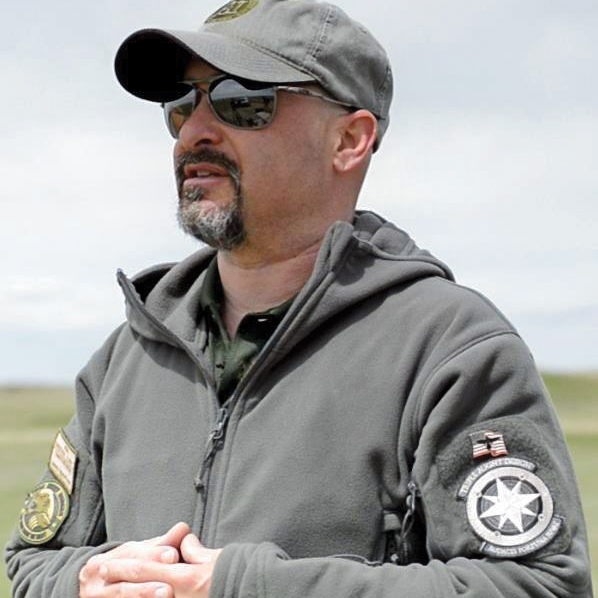
A former Marine Corps Scout Sniper, Frank Galli is a pioneer in the world of long-range rifle instruction. He’s the founder of Sniper’s Hide, one of the leading online communities for avid riflemen from all walks of life, including top military, civilian, law enforcement, and professional competition shooters.
Galli’s most notable contribution is his use of video instruction to help students who don’t have direct access to his rifle classes. In 2008, Galli was one of the first rifle instructors to adopt a video-based model of personalized instruction. He not only creates videos covering general rifle skills, he also makes videos addressing specific questions and problems that his students have. His inspiration came from an unlikely source.
“Photoshop,” Galli says. “I saw these online video tutorials for hundreds of dollars teaching Photoshop skills, and thought, I could do that for shooters.“
But even prior to 2008, Galli was at the forefront of the rapidly evolving world of precision shooting.
“September 11 was the defining moment,” Galli says. “Before that, if you go back 100 years, precision rifle was moving at a snail’s pace. Everybody was just regurgitating what Grandpa had taught. After September 11, everything changed.”
The military became much more focused on how to effectively use snipers in combat, and long-range rifle matches started gaining in popularity. Instructors like Galli, who sit at the nexus of these worlds, facilitated the sharing of information between them.
It’s difficult to overstate how rapidly the world of long-range shooting is changing.
“People used to come to me to shoot 1,000 yards. Now they want to shoot a mile. And they’re getting it done,” Galli says. “I have guys come with an Accuracy International rifle in 6.5 Creedmoor, using factory Hornady ammo, and get three out of five hits at a mile on an 18-by-24-inch target.”
Just within the last year, the bar for extreme accuracy has been raised. “We’re now effective out to 2,500 yards, because people are attempting shots at 4,000,” Galli says.
But most of his students have much more modest goals.
“I teach a lot of regular hunters, and for them it is all about extending their effective and ethical range,” Galli says.
He also makes it a point to get kids shooting in the matches he puts on.
“I had 12 kids under 16 years old at my last match,” Galli says. “We’ve got to get a new generation of shooters out on the range.” —John B. Snow
11. Johnny Morris, the Outdoor Retailer
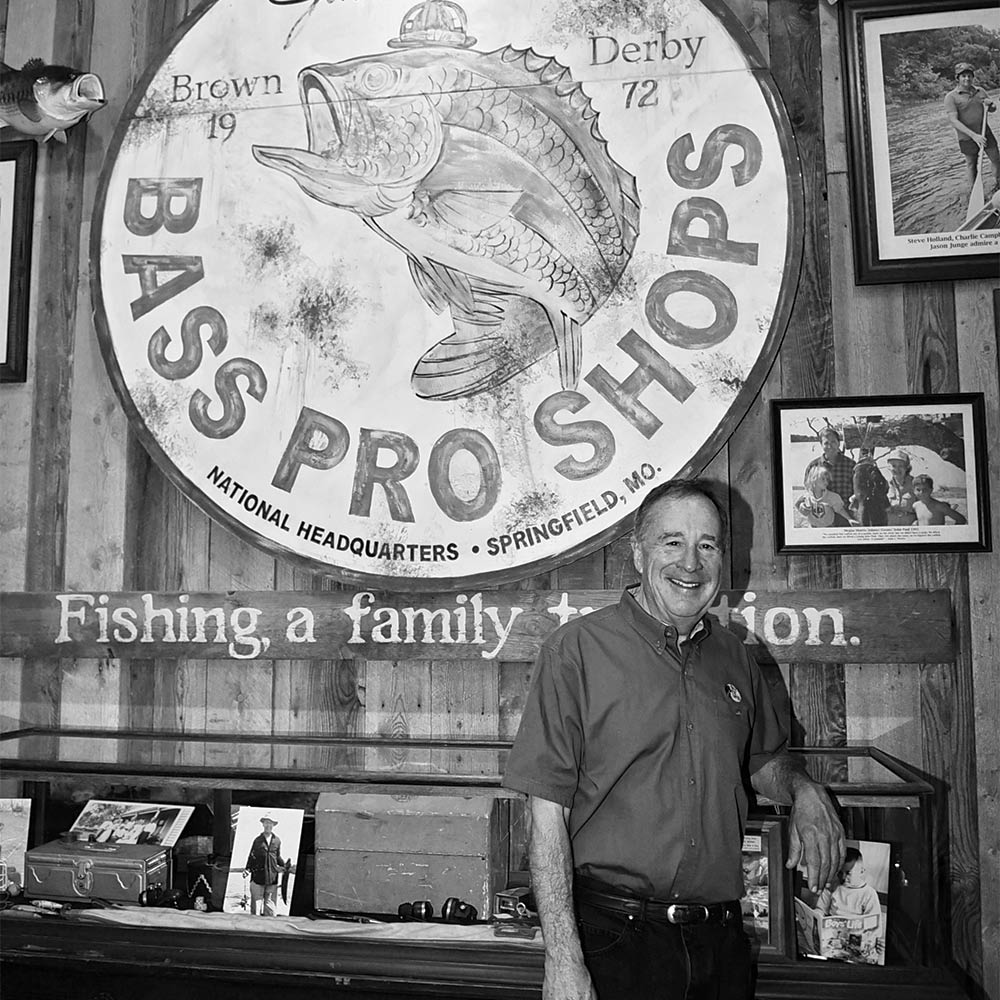
The protagonists of Horatio Alger’s stories were impoverished young men who rose from humble beginnings to lives of monetary security through hard work, determination, and honesty. Plainly, none of Alger’s characters ever made Forbes magazine’s billionaires list, let alone ranked as No. 172 on its list of the richest people in the U.S. But had he been born a century earlier, Bass Pro Shops founder Johnny Morris could have served as inspiration for the writer.
Though lionized by Forbes for his entrepreneurial accomplishments, the unassuming Morris prefers to ruminate on his humble upbringing and the company’s multi-faceted conservation efforts.
“My parents were both born in 1911,” he says. “My mom was one of 10 kids in a two-bedroom house with no running water, no electricity. But one thing they did have was the outdoors, and hunting and fishing. I’ve been blessed growing up in the Ozarks and fishing on the White River with my mom and dad. And I believe that we have an obligation to future generations to give back to the sports that we love and that have given us our livelihood.”
Bass Pro Shops currently partners with more than a dozen leading conservation organizations and has earmarked all the profits from its recently opened Wonders of Wildlife National Museum and Aquarium to conservation efforts.
“The whole facility is about celebrating the roles that hunters and anglers have played in conservation,” he says. “It’s the spirit of teamwork that makes things happen.”
—G.B.
12. Dude Perfect: The Viral Kings
Dude Perfect is a group of five “bros” who made a basketball trick-shot video that went viral. Now they have the largest social media audience in the sports world. Think of Dude Perfect as a mashup of Annie Oakley and the Harlem Globetrotters. The buddies from Texas, who met in college, have amassed 23 million YouTube subscribers and 18 million Facebook fans.
Since that first viral YouTube video, they’ve been making highly produced trick-shot videos that include everything from the world’s longest archery shot to throwing a football through a basketball hoop from the top of the 32-story Bass Pro pyramid in Memphis.
The majority of Dude Perfect content revolves around mainstream sports like basketball, football, and golf. But over the past few years, they’ve created at least a dozen videos that involve hunting, fishing, and shooting that have gone super-viral—the archery trick-shot video alone has 43 million views.
Part of what has made Dude Perfect so successful is a goofy, carefree style that resonates with a young audience. In fact, about a quarter of each video is dedicated to the guys celebrating after each shot is made. And this is exactly why the Dudes are so perfect for the outdoor sports. They present our pastimes in a fearlessly positive and endlessly youthful light, and place them on the same platform as mainstream sports. (Dude Perfect actually has more YouTube subscribers than the NFL, MLB, and NBA combined.) Even though the guys are in their late 20s now, their videos show them acting like enthusiastic high-schoolers jumping around a locker room before a game. And the effect works: It’s almost impossible to dislike them. Dude Perfect’s incredible reach puts an important message in front of a mega audience: Hunting, fishing, and shooting are fun. —A.R.
13. Steven Rinella: The Meat Eater
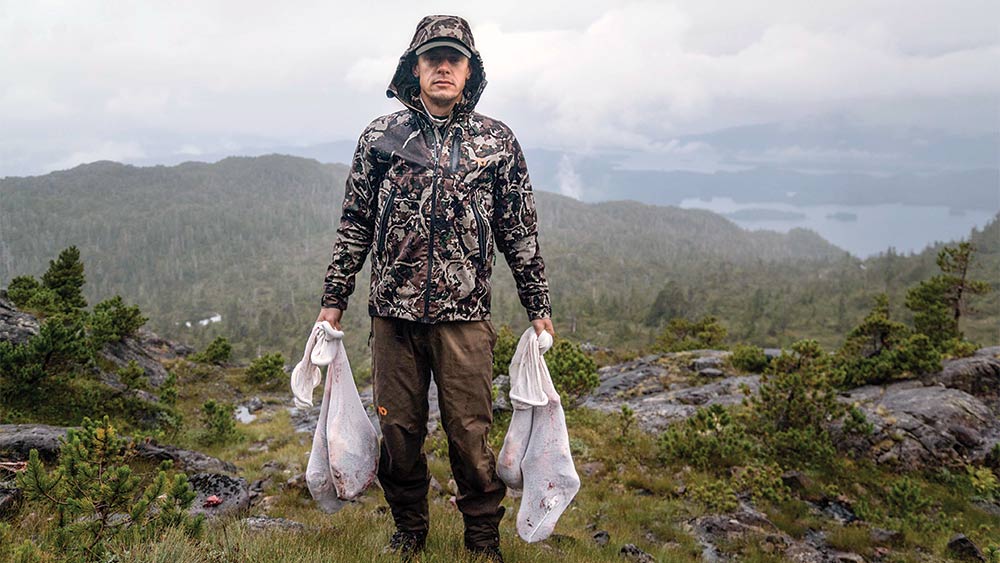
Steven Rinella is a hardcore hunter who speaks to a surprising audience: nonhunters. The 43-year-old is a media personality and wild-game enthusiast whose body of work has leaked out of the hunting community and into the public consciousness.
“I’ve learned how to think about hunting and I’ve learned how to talk about hunting by spending time with people who haven’t thought about it and don’t talk about it,” Rinella says. Although he was raised on hunting, fishing, and trapping in Michigan, he has lived all over the country, including in metropolises like New York City and now Seattle.
He’s authored five books, written about hunting for non-outdoor publications like Men’s Journal and The New York Times, launched a popular podcast and, perhaps most notably, created the TV series MeatEater. Many consider the show’s honest portrayal of hunting a response to the commercialized reality shows that give our sport a bad rap, but Rinella says this isn’t intentional commentary. Instead, he says, it’s because he never watched hunting TV, and therefore didn’t have a template in his mind to follow or reject when he tackled his own show.
The reality show premiered in 2012 on the Sportsman Channel; now, more than 80 episodes have aired to date. It’s the most recent distribution of these episodes, however, that has accelerated Rinella’s impression on nonhunters: MeatEater began streaming on Netflix last year.
“We hear from so many people who don’t hunt, who write in to say how surprised they were that they enjoyed the show,” Rinella says, citing examples of a vegan who was trying to solve their child’s iron deficiency, and a Special Forces member uncertain of a path forward after many tours of combat. “People say, ‘I never wanted to hunt but I want to hunt now.’ I think what speaks to [nonhunters] is that we take a lot of people out for their first hunts on the show.”
The biggest danger to hunting—and the biggest impediment to those viewers and listeners striking out on their own—is not having a place to hunt, he says.
“I’m acutely aware of threats and challenges to hunting, particularly habitat and access issues. But I’m very optimistic about [the future of hunting]. It’ll continue to change.”
As the landscape evolves, Rinella plans to remain a part of the conversation. He continues to make new episodes of the MeatEater podcast and TV show (Rinella just finished filming the seventh season), and he looks to new recruits—including his own kids—to help shape the future. —N.K.
14. Julie Golob, the Athlete
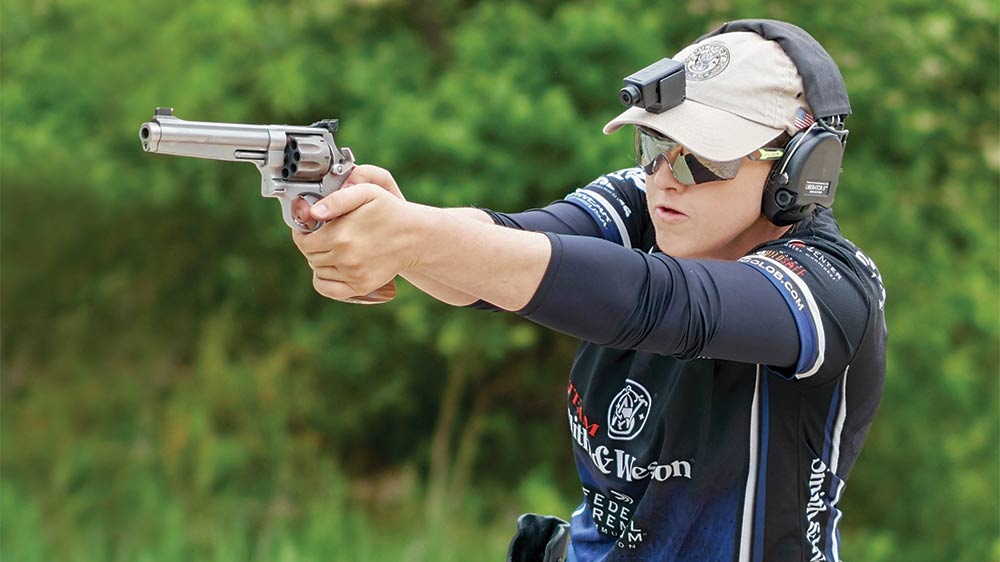
She’s lost count of the precise number of championship titles to her name, but Julie Golob knows it’s somewhere north of 130. When you’re a world and national shooting champ who’s also an instructor, author, social media ace, and mom of two girls, that’s bound to happen. Golob’s impact on the shooting sports is undeniable in terms of personal and professional accomplishments, but also when it comes to instructing and inspiring the public—particularly girls and women—to pursue the same.
Golob started shooting when she was 14, and went to her first nationals as a junior in high school. Her competitive success accelerated once she enlisted in the Army, where she earned a spot on the U.S. Army’s Action Shooting Team, and was named the U.S. Army Female Athlete of the Year. She served for eight years and can recall an early example of the realization that her accomplishments were inspiring others.
“The big thing was wearing Army black and gold, and going to a match and having a little girl come up to me,” Golob says. She was reminded of herself when she was a girl. “To be the living proof of what she wanted, right in front of her, was really a surreal experience.”
Golob says she feels more like a lifestyle influencer than a pro shooter, and her social media presence reflects that. While she doesn’t get paid to maintain her Facebook and Instagram pages, curating them is an important way to connect with an audience of shooting enthusiasts and hopefuls.
“The hunting and shooting communities are still very male-dominated. But the number of women that are getting out there and involved in programs and wanting to find the ‘in’ is growing,” Golob says, noting that her female fans often seek guidance from her directly. “I think that’s where people like me—and other women in the shooting sports—come in, because we’re accessible in a way that a lot of other influencers aren’t. Whether we’re at a local club match or a national championship, you can come up and say hi.”
That approachability has helped build Golob’s fan base (which still skews heavily male), although it has also invited the usual vitriol from the anti-gun and anti-hunting crowd, which is often disproportionately directed toward women. Golob doesn’t let it faze her, though, maintaining a cheerful, practical perspective on the blowback. —N.K.
15. Grant Woods, the Whitetail Whiz
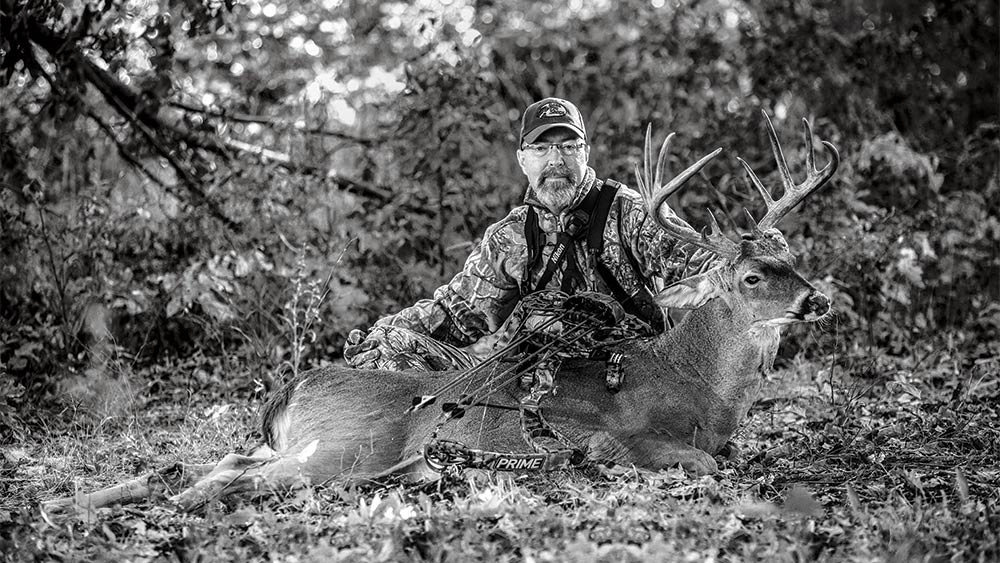
If you’re anything more than a once-a-year deer hunter, odds are high you’ve heard of Grant Woods. If you haven’t, imagine Bill Nye the Science Guy in a treestand.
Woods, the founder of GrowingDeer.com, is a pioneer in the world of deer science communications. Much of what we hunters understand about whitetails is rooted in work Woods has participated in, or comes from information that he has helped disseminate.
“I just love deer. I’m not someone special,” Woods says. “If anything, I’m a pretty good communicator.”
Woods’ background in deer biology and management is deep and diverse. He was among the first researchers to use remote-activated cameras to record images of deer using rubs and scrapes, unlocking much of the information we now hold as common knowledge. He was an early implementer of restrictive buck harvest in the Southeast, and he was among the first to master the art of communicating technical, jargon-laden research data to everyday hunters.
“I take highly technical science and communicate it to deer hunters in a way that helps them put it to use,” he says.
Woods’ was one of the first deer “consultants” in the country, paving the way for a cottage industry of independent biologists and managers focused solely on studying whitetail behavior and managing habitat for deer.
As successful as Woods has been, he views what comes next—addressing chronic wasting disease, declines in whitetail populations, and habitat issues—as his most important tasks.
“We have this tremendous heritage of sportsmen and women. We have this incredible natural treasure in the whitetail deer. We need to protect both. We need to fund research, and we need to shift our emphasis to these emerging issues.” —Tony Hansen
16. Bob & John Nosler, Hunting’s First Family
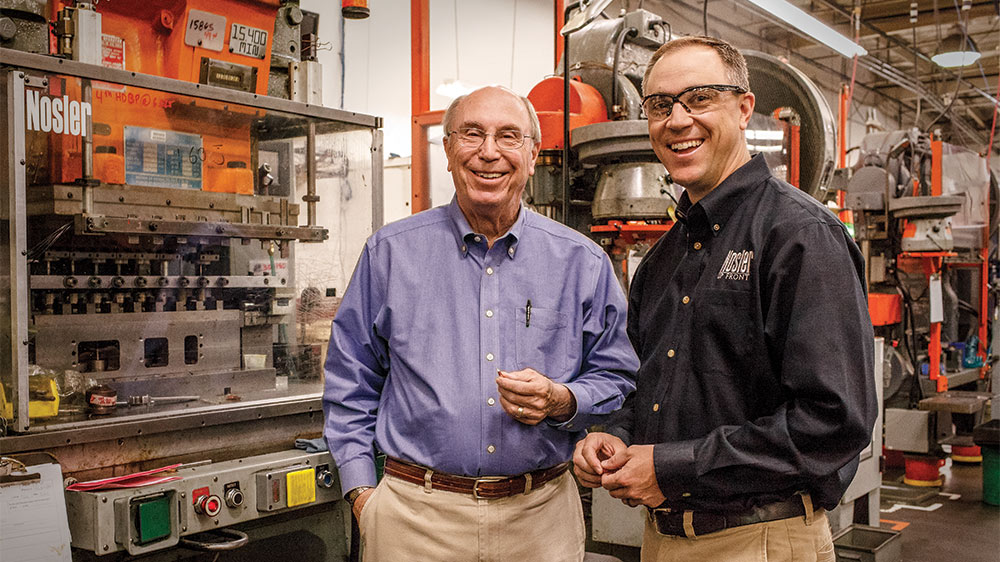
After failing to kill a moose with a well-placed shot from his .300 H&H in 1946, John Nosler decided he would build a bullet that would get the job done. One year later, the legendary Nosler Partition was born; the year after that, John opened the Nosler Partition Bullet Company.
The company has grown by orders of magnitude since those post-war days, and is now called Nosler Inc. It no longer makes just bullets, but it still remains true to that original goal: helping hunters and shooters make better shots. In 1984, it introduced the Nosler Ballistic Tip, a key turning point for the company. It wasn’t the first plastic-tipped bullet, but its accuracy and terminal performance became the standard by which others were judged.
Today, Bob and John Nosler—the son and grandson of the founder—run the company, and they have been introducing new products at a breakneck pace since the early 2000s. Among them are the AccuBond bullet, one of the most balanced and capable hunting bullets on the market. Nosler has also moved aggressively into long-range-competition bullets—the RDF series—and into long-range hunting with the Accu-Bond Long Range.
For a bullet company alone, these would be impressive introductions, but Nosler has expanded into making loaded ammunition, its own proprietary cartridges, and some of the finest hunting rifles on the market.
“All of our ideas come from sitting around the fire in hunting camp, where you’re figuring out what the world needs,” John Nosler says.
Many new products had been on the Nosler to-do list for some time.
“When I came to the company after college in 2000, my father gave me a business plan he had written in 1988 with all these ideas in there. He had all this sketched out, and I had all this energy, and we just started to get things done.”
Among the most significant accomplishments for Nosler has been launching its proprietary cartridges: the 26, 28, 30, and 33 Noslers.
“One thing on my grandfather’s wish list was to have the Nosler name on a cartridge.” —J.B.S.
17. Kevin VanDam, the Bass Pro
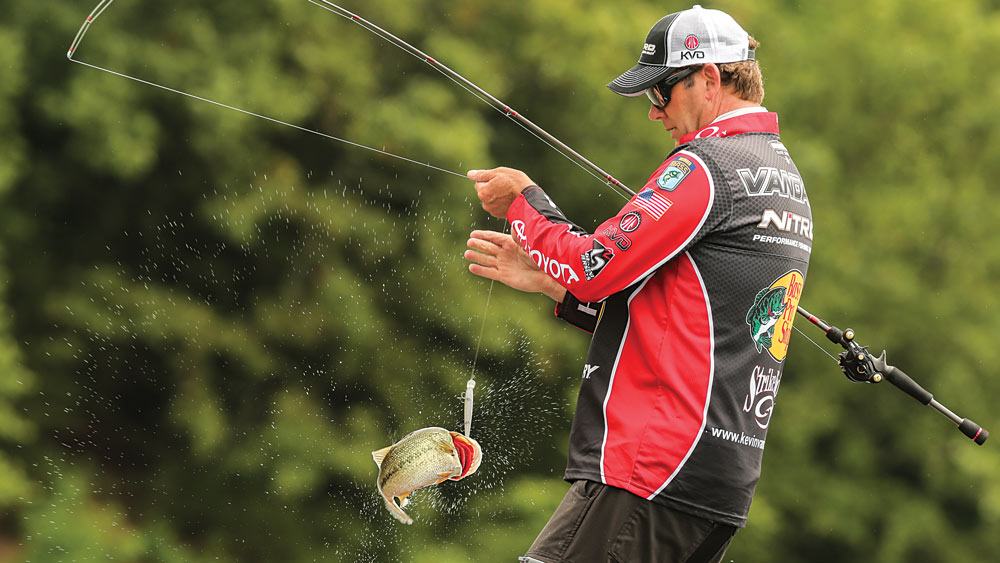
Kevin VanDam fished his first BASS tournament in 1987. He ended up in 110th place. Today, the 109 anglers who finished above him likely savor that moment, because VanDam has been almost invincible ever since. The Kalamazoo, Mich., Elite Series pro has four Bassmaster Classic trophies, seven Angler of the Year titles, and 24 tournament wins, and has cashed more than $6.2 million in tournament checks. His three decades of dominance have not only turned his name into a verb (“I totally KVD’d that fish!”), but have inspired an industry and created a rabid fan base for professional bass fishing.
“I really have no secret other than the drive to be the best I can be. My competitive nature pushes me to win, and anything short of that is a disappointment to me,” VanDam says. It is this passion to dominate that led him to develop the “sexy shad” color for Strike King. “I won two tournaments on this color before it was released in 2008, and it became Strike King’s best seller that year. Now, as I understand it, it is the hottest-selling color for every hard-bait manufacturer.”
Before VanDam became KVD, anglers from the South dominated the professional bass fishing scene. That has since changed dramatically.
“I’m most proud that I proved that a fisherman from the North can compete in the South. There was a time when I was the only competitor on the Bassmaster tour from a northern state. Now you see a lot of very talented northern anglers on the national stage.”
His impact extends to retailing. VanDam was the first professional angler to develop an identifiable brand that manufacturers could add to products he designed to drive consumer sales. Consumers responded, many wearing his jersey to tournaments.
“It’s flattering, to be sure. I owe so much to the fans for supporting me throughout the years—now I hope to give back.”
He’s doing that through the Kevin VanDam Foundation, which helps get youth involved in fishing. “Bass fishing is in a really good place right now. Our lakes are in the best shape I’ve ever seen, and a lot of youth are energized about tournament fishing. The Foundation’s goal is to keep the momentum moving forward. I owe that to the sport.” —G.B.
18. Wayne LaPierre, Gun Rights Warrior
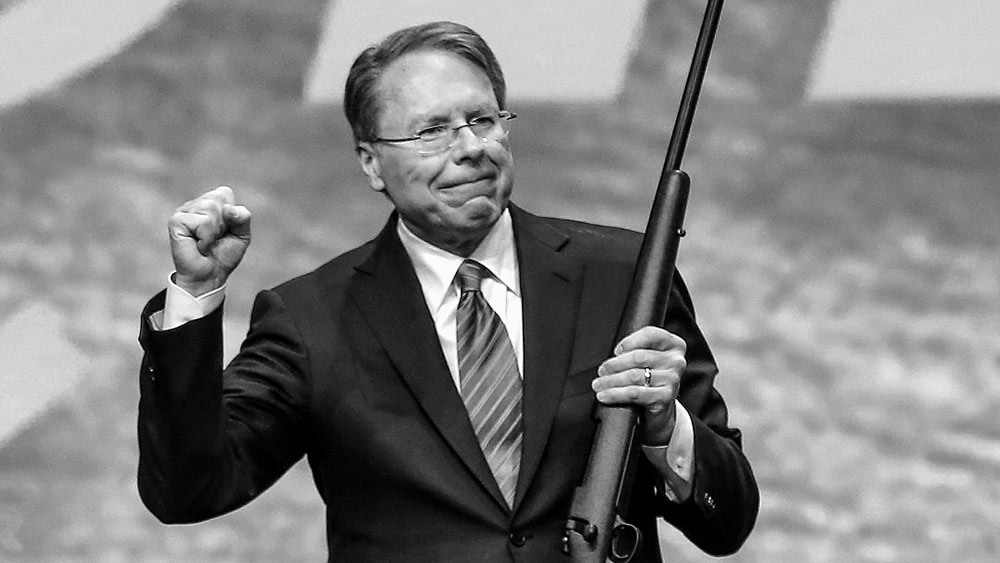
To the anti-gun crowd, he is the devil incarnate. To the Second Amendment faithful, he is a staunch and unyielding advocate for gun rights. And to the majority of Americans—at least those who tune in to cable TV news—he is the longtime face of the NRA, where he has served as executive vice president since 1991.
But Wayne LaPierre is much more than a talking head. Working closely over the decades with the NRA’s advertising and public relations firm Ackerman McQueen, LaPierre has been a key figure in shaping the landscape of the gun debate.
The hard-nosed, street-brawler mentality employed by LaPierre has been part of a methodical strategy to keep the NRA’s supporters motivated, especially during Democratic presidential administrations, in order to prevent anti-gun legislation from gaining traction.
This is most evident when LaPierre calls out anti-gun politicians by name, personalizing the opposition and giving the pro-gun movement a clear target for their ire.
There is a segment of gun owners who think the NRA is too soft, but LaPierre has been savvy about crafting a message that appeals to more moderate gun owners and to the non-gun-owning public who are on the gun-debate fence. LaPierre uses the word “freedom” whenever he talks about gun rights, linking that most fundamental American ideal with the rights guaranteed by the Second Amendment. The logic goes that while some citizens might not know how they feel about guns, all Americans value freedom. —J.B.S.
19. Matt McPherson: The Bow Master
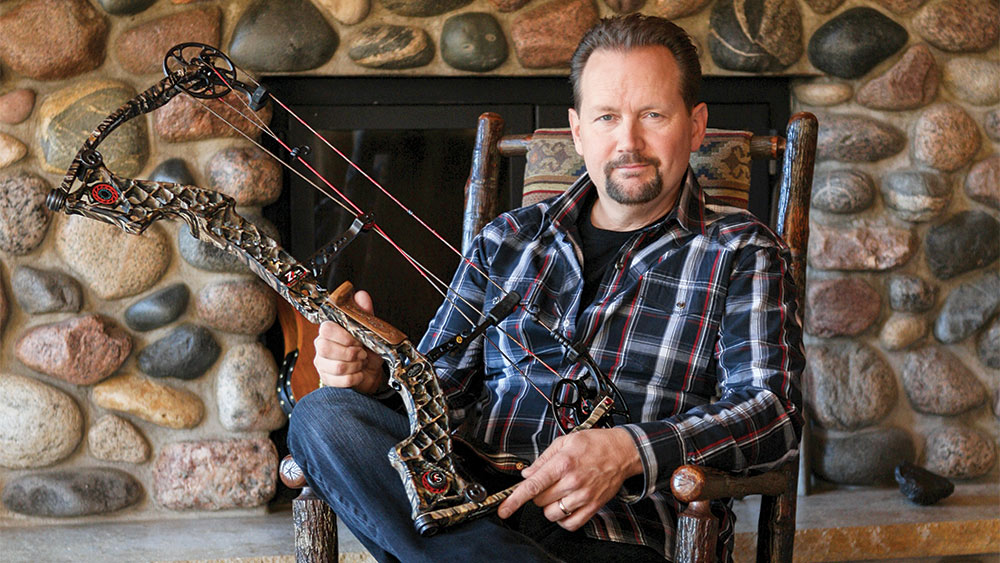
Parallel limbs. Carbon cable guards with rollers. Short axle-to-axle length. Large cams. Single-cam systems.
Pick up any compound bow made in the last decade from any manufacturer and you’ll find at least one of those technologies. That also means you’ll find some of Matt McPherson‘s influence.
McPherson, the founder of Mathews Inc., has changed bows and bowhunting in a way that few besides Fred Bear himself can claim. And it all started because of his mom.
“My mom was afraid of guns. My dad wanted to go deer hunting. So he went out and bought a bow,” McPherson says. “I grew up in a very poor family. If I wanted something, I had to make it. So I started making bows when I was 6, 7, 8 years old. I built my first compound around 1970. In 1985, I launched McPherson Archery.”
Eventually he sold that company. In 1992, he got back into the world of bow building with the launch of Mathews Inc.
“I was driving and had this idea about a new type of bow. I ran home and strung up a prototype that would tell me the concept was at least viable. After a little messing around I was convinced it would work.”The idea? A bow made with a single cam on the bottom limb and a round idler wheel on top. The concept was simple: Eliminate all the hassle of timing cams and, perhaps more important, create a bow with a rock-solid back wall.
“At the time, folks were taught to shoot in the valley,” McPherson says. “That made no sense because you can have slight variations in speed depending on where you release. I knew it was more consistent to release against a very solid wall. And as soon as we started to show the accuracy and consistency that came from the solo-cam setup, and the lack of sync issues, that was it. Everyone had to have one.” —T.H.
